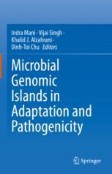Search
Search Results
-
Solutions: how adaptive changes in cellular fluids enable marine life to cope with abiotic stressors
The seas confront organisms with a suite of abiotic stressors that pose challenges for physiological activity. Variations in temperature, hydrostatic...

-
Features of the Biology of Mass Fish Species in Russian Waters of the Chukchi Sea. 1. Commercial Fish Biomass. Family Gadidae
AbstractBased on the results of research in 1995–2020, mass and potentially commercial fish species have been identified in Russian waters of the...

-
Variability in δ13C and δ15N trophic discrimination factors for teleost fishes: a meta-analysis of temperature and dietary effects
Stable isotope analysis (SIA) is widely used to assess animal diet and movements, requiring accurate estimates of trophic discrimination factors...

-
Parasites of invasive pink salmon, Oncorhynchus gorbuscha (Walbaum, 1792) (Actinopterygii: Salmonidae), in the Kandalaksha Bay of the White Sea
Pink salmon, Oncorhynchus gorbuscha (Walbaum, 1792), a native of the North Pacific Ocean, is an invasive fish species rapidly expanding in the North...

-
Genomic Islands in Pseudomonas Species
Pseudomonas is a Gammaproteobacteria, Gram negative which normally found in natural habitat such as soil, water and air. Especially, in marine...
-
Determining the influence of abiotic factors on spatial–temporal patterns of marine catfish (family: Ariidae) within the Apalachicola Bay System, Florida
Two species of marine catfishes (family: Ariidae) are abundant within the Apalachicola Bay System for much of the year. They function as 2nd and 3rd...

-
First evidence of microplastics in the Marine Protected Area Namuncurá at Burdwood Bank, Argentina: a study on Henricia obesa and Odontaster penicillatus (Echinodermata: Asteroidea)
Large quantities of microplastics end up in the marine environment, constituting a potential threat for many organisms even in remote protected areas...

-
Marine Megafauna and Charismatic Vertebrate Species
Marine megafauna typically include large pelagic sharks, sea turtles, seabirds, and marine mammals. These megafauna are mainly associated with...
-
Broad feeding niches of capelin and sand lance may overlap those of polar cod and other native fish in the eastern Canadian Arctic
As ocean temperatures rise, sub-Arctic capelin ( Mallotus villosus ) and sand lance ( Ammodytes spp.) have become increasingly abundant in regions of...

-
From ecological functions to ecosystem services: linking coastal lagoons biodiversity with human well-being
In this review we highlight the relevance of biodiversity that inhabit coastal lagoons, emphasizing how species functions foster processes and...

-
A review of marine stressors impacting Atlantic salmon Salmo salar, with an assessment of the major threats to English stocks
Atlantic salmon Salmo salar is a socio-economically important anadromous fish species that has suffered synchronous population declines around the...

-
Movements of anadromous coastal cutthroat trout (Oncorhynchus clarkii clarkii) in Puget Sound, Washington, USA
Anadromous salmonid species vary in their use of open ocean, coastal, and inland marine waters. To better understand this diversity in behavior and...

-
Distribution of rorquals and Atlantic cod in relation to their prey in the Norwegian high Arctic
Recent warming in the Barents Sea has led to changes in the spatial distribution of both zooplankton and fish, with boreal communities expanding...

-
Instability Stabilized: Mechanisms of Evolutionary Stasis and Genetic Diversity Accumulation in Fishes and Lampreys from Environments with Unstable Abiotic Factors
AbstractAs studies have shown, individuals from well morphologically distinct groups often represent the same species and may even belong to one...
-
Food chain, parasites and climate changes in the high Arctic: a case study on trophically transmitted parasites of common eider Somateria mollissima at Franz Josef Land
Assessment of the impact of climate change on the Arctic nearshore ecosystems requires knowledge of the “reference points”, that is, the state of...

-
Fish Diversity of Subarctic Waters in Japan
The fish diversity of the subarctic waters in Japan is reviewed and its origin is discussed in this chapter. The subarctic waters in Japan, including...
-
Phylogeography of split kelp Hedophyllum nigripes: northern ice-age refugia and trans-Arctic dispersal
Pleistocene climate cycles greatly influenced the distributions of kelps in northern seas and gated trans-Arctic dispersals between the North (N)...

-
Vulnerability of exploited deep-sea demersal species to ocean warming, deoxygenation, and acidification
Vulnerability of marine species to climate change (including ocean acidification, deoxygenation, and associated changes in food supply) depends on...

-
Demersal fish diversity and molecular taxonomy in the Bering Sea and Chukchi Sea
DNA barcoding by sequencing a standard region of cytochrome c oxidase subunit I (COI) provides an accurate, rapid method for identifying different...

-
Diet of capelin (Mallotus villosus) in the Eastern Canadian Arctic inferred from stomach contents and stable isotopes
Capelin ( Mallotus villosus ), a sub-Arctic forage fish, has become abundant in the Canadian Arctic in recent decades, with consistent spawning...

